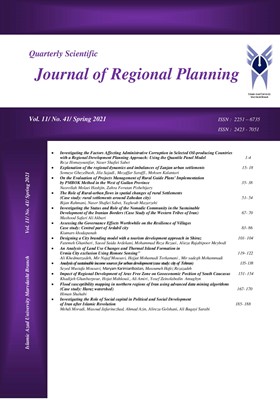Structural Changes and Income Inequality in Iran's Provinces
Subject Areas : Regional Planning
Mohammad Bager beheshti
1
,
parviz mohamadzadeh
2
![]() ,
خلیل قاسملو
3
,
خلیل قاسملو
3
1 - Professor of Economics at Tabriz University
2 - Associate Professor, Faculty of Economics, Tabriz University
3 - رئیس گروه امور تولیدی-سازمان مدیریت و برنامه ریزی استان زنجان
Keywords: "Structural Changes in Production", "Inequality of Income", "Provinces of Iran", "Panel Data,
Abstract :
The consistency between the national development goals and the provincial development goals is highly important. The objective of this paper is to estimate the impact of production structural changes on income inequality among Iranian provinces. The research used the change of share of production sectors during years of 2000-2014 as the structural change. Meanwhile, the difference between each province's per capita income and the national per capita income was utilized as income gap among provinces. Through using a panel data regression the findings of research are as follows: By reducing the 1% share of the agricultural sector and transferring it to the industrial sector, assuming a stable service sector share, income inequality in the provinces of the country will increase by 1.42%, but with the transition to the service sector, with the assumption of a fixed share of the industry sector, this inequality remains unchanged. With a 1% reduction in the share of the industrial sector and its transfer to the agricultural sector or the service sector (assuming the share of the other part is assumed), income inequality between the provinces decreases 1.47 and 1.86%, respectively. With a one percent reduction in the share of the services sector and its transfer to the industrial sector, with the assumption of a steady share of the agricultural sector, income inequality in the provinces will increase by 1.8%, but with the transition to the service sector, with the assumption of a fixed share of the industry sector, this inequality remains unchanged.
_||_


